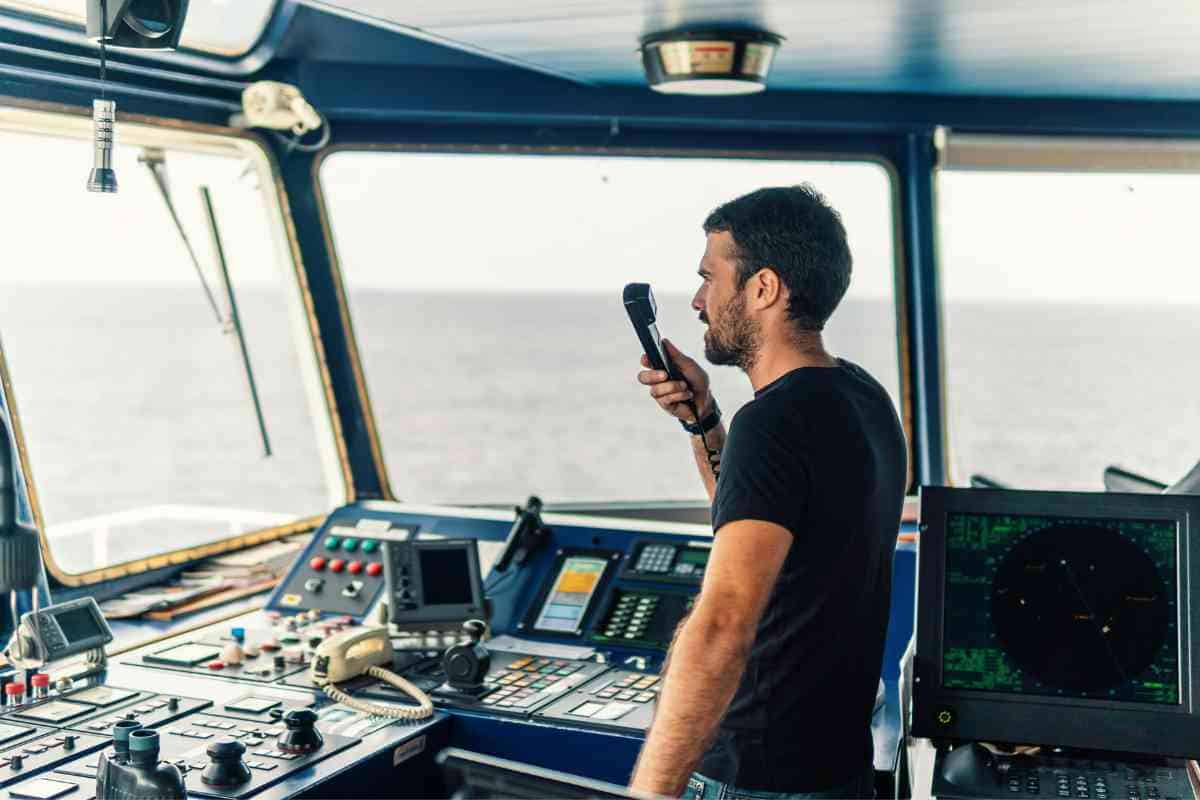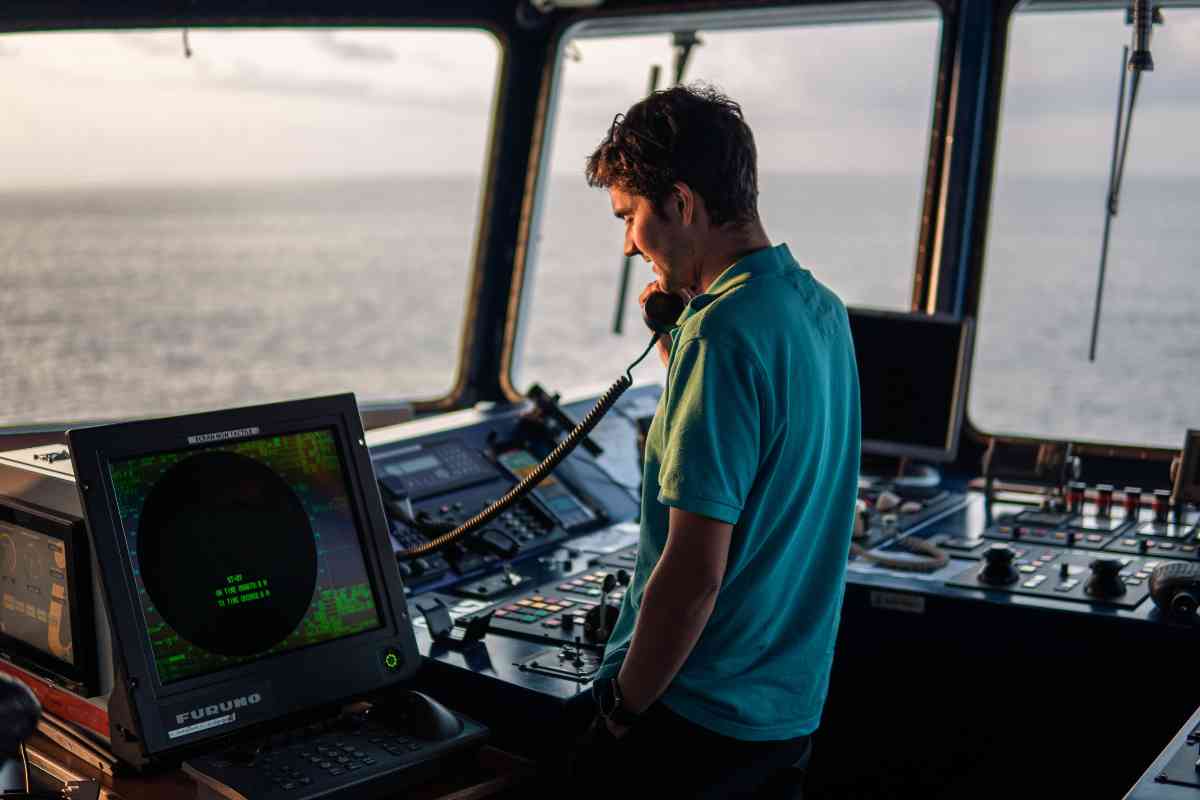How Far Will A 25 Watt Vhf Radio Transmit?
Next to the lifejacket, a functioning Marine VHF radio is one of the most essential tools on any boat. Without a proper Marine VHF radio, you can quickly find yourself in trouble. VHF stands for very high frequency. Specifically, that frequency range can be anywhere between 156 MHz to 172 MHz. That is just a fraction of the combined radio frequencies available that range between 30 MHz and 300 MHz. The VHF radio band is reserved for maritime use. Your Marine VHF radio is a unit that combines a transmitter and a receiver. It utilizes a push-to-talk or PTT button that is on the handset. Anyone who has used a walkie-talkie will be familiar with this operation.
The most powerful VHF radio that boat owners are allowed to have is the 25 watt VHF radio. Many of these radios allow you to adjust the wattage used for transmission. That will be a factor in how far you can transmit a Vhf wave. But there are also other factors to consider for that calculation. Here are some of those factors:

Table of Contents
- How Far Will A 25 Watt Vhf Radio Transmit?
- Antenna Height
- Clear Line Of Sight
- Weather
- Power Supply
- Wattage Power
- VHF Radio Protocols
- Calling All Ships
- Marine Radio Vocabulary
- Safe Boating
How Far Will A 25 Watt Vhf Radio Transmit?
A 25 watt Vhf radio can transmit a signal up to about 60 miles away, depending on many factors like antenna height, weather, and your power supply, among others. Generally, you should count on your 25 watt Vhf radio to reliably transmit about 40 miles.
Antenna Height
You should use an antenna installed on your boat to help operate your marine VHF radio. The higher you can place your antenna above sea level, the greater you will be able to transmit a signal. Tall ships can get away with smaller antennae.
It is also important to remember that antennas utilize vertical polarization. Vertical polarization means your antenna has to be positioned vertically to maximize its efficiency. You might see some boats that have antennas with a rate installation. Rate installation might look sleek, but ultimately it is impractical.
Clear Line Of Sight
Your line of sight will also impact how far your 25 watt VHF radio can transmit. That does not mean you have to actually “see” the object you are communicating with. However, your antenna does need to have a line of sight free of obstructions.
Think of your VHF radio transmissions as light waves. You cannot see either of those types of waves, but they are there. And if something blocks those waves, like a structure or land mass, then the communication will be blocked. That is why you will always see radio towers erected at the highest altitude.
Weather
Certain weather conditions can also interfere with your VHF radio transmission. That is why in dense fog or heavy rain, you might not be able to get a signal out.
Power Supply
Handheld marine radios use batteries for their power supply. The higher the wattage, the quicker those batteries will drain. That is why it is crucial to have backup batteries as part of your boat supplies.
Wattage Power

Of all the factors that determine how far a VHF radio can transmit, the wattage power is the most important. A watt is a unit of energy. For a Marine radio, the wattage determines the transmission power of a signal.
A good rule of thumb is that one radio watt can transmit about a mile and a half. That means a 5-watt radio can broadcast a signal to another radio 12 miles away. So it stands to reason that a 25-watt VHF radio can transmit a single up to 60 miles. But, again, that will depend on those other external factors.
For a point of reference, the average terrestrial radio station transmits a signal that is between 50,000 and 100,00 watts.
VHF Radio Protocols
Now that you understand all about the transmission for your VHF radio, you should also understand the various protocols for operating that radio. First, you have to consider the channels. Your VHF radio will have channels, not unlike stations that you might find on an FM radio. These channels are designated for specific use as follows.
- Channel 9 is the boaters calling channel. That is used more for recreational communication between boats.
- Channel 16 is for the exclusive use of distress calls between ships or to stations on the shore.
- Channel 13 is frequented by commercial ships for bridge-to-bridge transmissions.
- Channel 22A. The United States Coast Guard uses channel 22A for safety broadcasts. That can also be a channel for distress radio signals if channel 13 is congested.
- Channels 68 and 72 are for recreational boating communications.
If you ever find yourself in a life-threatening situation, you need to switch your radio to channel 16 and broadcast “Mayday” three times in a row. If you have a problem that is not life-threatening but still requires help, you can use the same channel to broadcast the words “pan-pan” three times in a row.
When you get a response to your distress call, be prepared to state your vessel’s name and location. That location should be in latitude and longitude degrees. The Coast Guard will be able to advise you on how to manage the situation.
It is also important to remember that any conversation you have on a radio takes up that frequency. In other words, that prevents anyone else from communicating. That is why conversations between boats, especially recreational boats, should be kept short.
Calling All Ships
Although you might have heard the “calling all ships” transmission in a movie, it is actually an incorrect procedure. Calling out to any random vessel could trigger a citation and fine from the FCC. That is why you need to identify who you are calling by the vessel’s name or the name of the sure station.
There is nothing wrong with wanting to make a “radio check.” But that radio check should never be to the Coast Guard. They are too busy keeping boaters safe to respond to every radio check. So instead, tune your radio to one of the recreational channels, and if you hear a specific boat name, you can call out for that radio check.
It is also vital that you identify yourself by the name of your boat at the beginning and the end of your transmission. You will be assigned a specific callsign if your boat is 65 feet or longer.
Marine Radio Vocabulary
Communicating on a Marine radio is not like making a phone call. There are additional protocols with regard to vocabulary that you should be familiar with. Here are some of the words to utilize with your radio transmissions:
- Over – your response is complete, and you are waiting for a reply.
- Out – your entire message is complete, and you do not need a reply.
- Affirmative – is for yes.
- Negative – is for no. Using affirmative or negative will make sure those words are communicated clearly.
- Roger – you got the message, and you understood the message.
- Wilco – stands for “will comply.” It means you will carry out the request from the message.
Using these vocabulary words will keep your communications professional and easy to understand.
Safe Boating
Before setting out on your next boating excursion, you should always check to make sure your radio is working correctly and that you have a backup power supply, just in case. You will also want to tune into channel 22A to check on any critical weather or safety updates.
Having a working VHF radio on your vessel is one of the many ways to ensure that every boat trip will be a safe boat trip.
